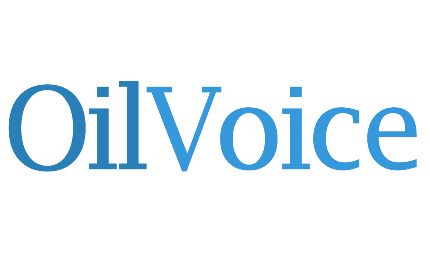Applied Drilling and Well Engineering
The objective of this 5 days Applied Well Engineering course is to provide well engineers with an advanced and practical insight into the Well Design and Well Construction process. This course approaches well construction as a design process. In doing so each topic is addressed by the participants by defining objectives and creating a basis of design. Once this has been completed the detailed design process is addressed.
The course is scheduled around an actual well and it is combined with practical examples to enhance the theoretical and practical knowledge of the candidates. As the course progresses, complexity is increased, requiring the candidates to re-evaluate objectives as new conditions are introduced. The course addresses all aspects of well design and well operations including aspects that are generally conducted by contractors.
Each of the participants will work and create a detailed drilling program, which will include costs, timings, risk assessments and contingency planning. Once the well design is completed the program will be used to review operational management and optimization opportunities.
DAY 1 - Introduction to Well Planning and Formation Temperatures
The first day introduces the well planning process, Objectives and Basis of Design as well as the general standards and guidelines that need to be referenced. Introducing the objectives of the well to be designed and working through the basis of design including first pass of drilling times and costs. From the initial well proposal, we add the understanding of pore, fracture pressures and the temperatures as they are provided to the well engineer. The objectives are to incorporate the formation pressures and temperatures into the basis of design and understand the implications. Various methods for pressure determination and potential variations in pressure predictions will be introduced
-
Welcome and Introductions
-
Well Types
-
Well Planning
-
Objectives
-
Basis of Design
-
Standards and Guidelines
-
Data Requirements for Well Planning
-
Considerations in well planning
-
Offset wells
-
Drilling program
-
-
Estimating Drilling Duration
-
Estimating Well Costs
-
Pore Pressures
-
Fracture Pressures
-
Temperatures
DAY 2 - Directional Planning
This part introduces the understanding of directional planning and downhole targets. Directional calculations and the basis of design for trajectory planning will be addressed. With the trajectory directional plan designed tool and survey requirements, anti-collision and Torque and Drag calculations are conducted
-
Well Trajectory Directional Planning
-
Reference Systems
-
Trajectory Planning
-
-
Directional Tools
-
Directional Control
-
Torque and Drag
-
Tortuosity
-
Anti-Collision
Exercises: Trajectory planning and anti-collision calculations
DAY 3 - Casing Design
Casing design on the proposed well will be introduced. The principles of casing design, casing properties and connections will be introduced. Conductor design for a jackup rig and the wellhead types and selection of the wellheads will be introduced.
-
Casing Design
-
Selecting Setting Depths
-
Casing Properties
-
Load Cases Design Factors
-
Coupling and Connectors
-
Material Selection
-
-
Conductor Design
-
Wellheads
-
Casing running Operations
Exercises: Casing Design setting depth selections and tensional, burst and collapse
calculations and design factors.
DAY 4 - Cementing and Drilling Fluids
Introducing the objectives and basis of design for cementing. Cement slurries and additives are introduced with testing requirements for the cement recipes. Cementing programs for the casing strings in the well will be completed and potential cementing problems are introduced.
Introducing the objectives and basis of design for drilling fluids. Selection criteria for water based and oil based fluids. Introducing testing of drilling fluids and data gained from mud reports. Introducing rheology, fluid types and hydraulics and pressure loss calculations. Hydraulics optimization and solids control. Surge and swab pressures.
-
Cementing
-
Cement Slurries
-
Cement additives
-
Cement Testing
-
Cement Placement
-
Cementing Problems
-
Remedial Cementing
-
-
Managing Cementing Operations
-
Drilling Fluids
-
Water based Fluids
-
Oil Based Fluids
-
Fluid Properties
-
Testing of Drilling Fluids
-
Solids Control
-
Hydraulics
-
Rheology
-
Pressure Losses
-
Hydraulics Optimization
-
Hole Cleaning
-
-
Surge & Swab
Exercises: Casing primary cement calculations, basic hydraulic calculations, pressure losses and hydraulics optimization. Calculations for hole cleaning.
DAY 5 - Drilling Challenges and Well Control
-
Drilling Challenges
-
Shallow Gas
-
Down Hole Equipment Failures
-
Surface Equipment Failures
-
Stuck Pipe
-
Losses
-
Drillstring Failures
-
Hole collapse
-
Well Control
-
Barriers
-
Kick Tolerance
-
Primary Well Control
-
Kick Detection
-
-
Secondary Well Control
-
Kick Circulation
-
-
Non-Conventional Well Control
-
Bullheading
-
Losses and Kicks
-
Plugged Equipment
-
-
Tertiary Well Control
-
Blowouts
-
Relief Wells
-
Notes:
What is Applied Drilling and Well Engineering training course objective?
At the end of the course, the participants will understand and be competent in:
- Participants gain a solid understanding of understanding objectives and creating a basis of design for each activity before working the details of their well program.
- Participants are made aware of the complexities and interaction between various components of well design and the subsequent well operations.
- Participants will gain a good understanding of well design aspects provided by contractors, they will also gain an understanding of the data requirements for the contractor work scopes.
- Participants gain a better understanding of the operational management, the risk management and mitigation aspects of well design and well operations and the influence these have on well objectives.
- Participants can go back to their operational roles after the course with a better understanding of the well design process.
Who should join Applied Drilling and Well Engineering training course by PetroSync?
This course was originally designed for young graduate or trainee well engineer. These are the fundamentals of well engineering and are targeted at participants that want to understand the well engineering fundamentals.
Steve Nas
Experienced well engineer and well engineering instructor with an MSc in Drilling Engineering and over 40 years of drilling and well engineering experience. Skilled in many facets of advanced well engineering such as Deepwater Managed Pressure Drilling, High Pressure – High Temperature, Geothermal, Well Integrity, Well Control and Well Abandonment operations. Experience working for operators, drilling contractors and service providers delivering a wide range of engineering solutions for complex wells.
Developed and presented numerous training courses related to well design, managed pressure drilling, high pressure high temperature operations, casing design, advanced well control, well control emergency response planning and well abandonment.
Skilled in thermal and multiphase hydraulic modelling for geothermal and underbalanced drilling and blowout kill calculations. Experienced in engineering solutions for well abandonment, relief well planning and coiled tubing drilling.
Coauthored several SPE books and numerous SPE papers and Member of SPE, ICOTA, IADC, IWCF, Energy Institute.
Upcoming Training
- Code PST0407-202601
- Start Date 29 Jun, 2026
- End Date 03 Jul, 2026
- Locations Kuala Lumpur, Malaysia
- Cost USD 3650
- Code PST0407-202602
- Start Date 10 Aug, 2026
- End Date 14 Aug, 2026
- Locations Bali, Indonesia
- Cost USD 3850
- Code PST0407-202603
- Start Date 07 Dec, 2026
- End Date 11 Dec, 2026
- Locations Kuala Lumpur, Malaysia
- Cost USD 3650
Upcoming Training
| Code | Start Date | End Date | Locations | Cost | Instructor |
|---|---|---|---|---|---|
| PST0407-202601 | 29 Jun, 2026 | 03 Jul, 2026 | Kuala Lumpur, Malaysia | USD 3650 | Steve Nas |
| PST0407-202602 | 10 Aug, 2026 | 14 Aug, 2026 | Bali, Indonesia | USD 3850 | Steve Nas |
| PST0407-202603 | 07 Dec, 2026 | 11 Dec, 2026 | Kuala Lumpur, Malaysia | USD 3650 | Steve Nas |
Past Training
| Code | Start Date | End Date | Locations | Cost | Instructor |
|---|---|---|---|---|---|
| PST0407-202301 | 30 Oct, 2023 | 03 Nov, 2023 | Kuala Lumpur, Malaysia | USD 3495 | Steve Nas |
| PST0407-202501 | 17 Feb, 2025 | 21 Feb, 2025 | Kuala Lumpur, Malaysia | USD 3550 | Steve Nas |
| PST0407-202502 | 27 Oct, 2025 | 31 Oct, 2025 | Kuala Lumpur, Malaysia | USD 3550 | Steve Nas |




